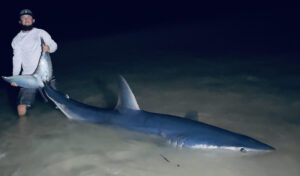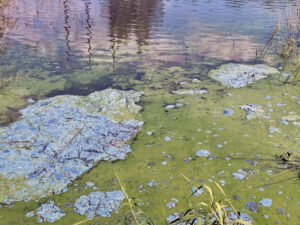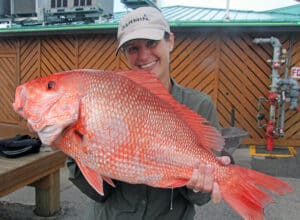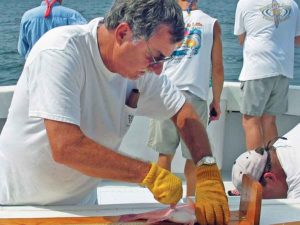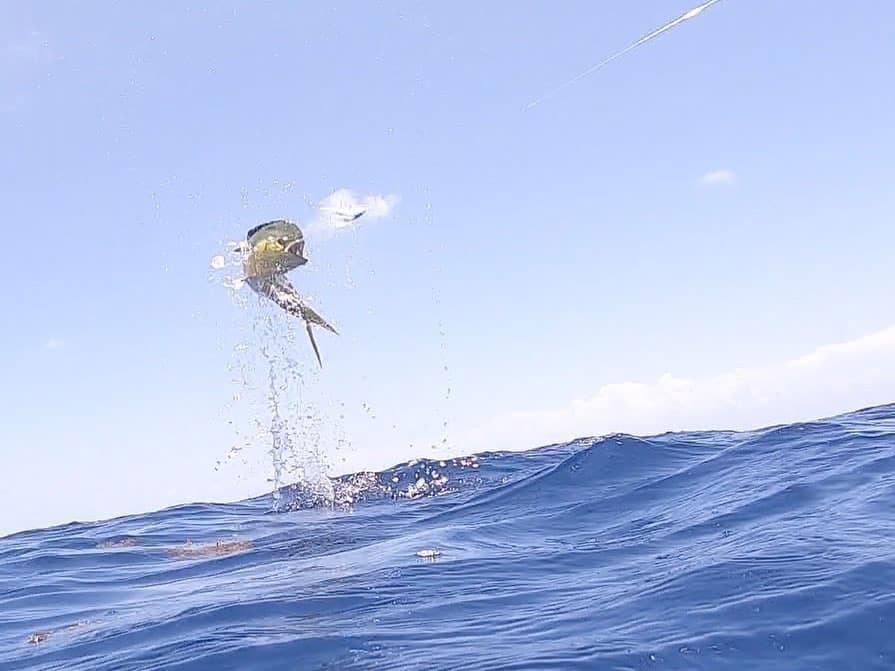
The privately financed Dolphinfish Research Program (DRP) reports that a rare international return of a tagged dolphin has been made recently.
Venezuelan angler Carlos Rosales caught a dolphin with a DRP tag, showing it had been a free-swimming fish for over a year, moving from South Florida to Venezuela before it was caught a second time.
DRP reports that the dolphin had been caught by Capt. Todd Lewis and his son Parker off Lighthouse Point near Ft. Lauderdale on June 25, 2021. The 16-inch dolphin was caught in 100 feet of water, tagged and released by the Lewis’s
Rosales caught the dolphin a second time off the coast of Venezuela on July 4, 2022 – 374 days after it had been caught, tagged and released in South Florida as a 16-inch juvenile dolphin. The recapture of a tagged dolphin is only the 24th international recovery of a DRP tagged fish. It’s the third recovery for dolphinfish tagged and released along the U.S. East Coast that has been reported in Venezuela.
DRP was not able to get an accurate size of the dolphin when Rosales caught the fish the second time off Venezuela. But the DRP data base of research from over 20 years of such catches and recaptures of dolphin shows the fish had grown to a remarkable 57-inches in length, with an estimated weight of 58-pounds.
Such stunning growth rates seem implausible, except for the fact that dolphin are among the world’s fastest-growing marine fish. They grow at staggering rates. And the fish range far, wide, and fast, as they shadow baitfish schools on which to feed.
“Dolphin are eating machines, almost a non-stop foraging apex predator, which is why they so readily hit lures and baits, and why they can grow to 80 pounds in under four years,” said South Carolina marine biologist Don Hammond, who was the head man at DRP for many years.
“Dolphin don’t know where they are, and they don’t care. A dolphin is happy and at ‘home’ if it’s in water temperature it likes – and there is plenty of baitfish around for it to eat. This is one of the primary keys for finding dolphin, and that includes big fish – food, abundant food, which is why they are so often holding around large beds of sargassum weeds.”
So far this year, DRP reports 104 boats have submitted dolphin tagging reports. The also have had international tag returns from Venezuela, Antigua, Ecuador, and the Dominican Republic.
Consistent DRP tagging of dolphin is being done in several new international locations including the United Arab Emirates, Aruba, Ecuador, Mexico, and the Gulf of Mexico.
One interesting dolphin tag return, DRP reports, is one that recently washed up on the southwest coast of the United Kingdom. DRP says that “doesn’t represent a true recapture, but does raise the question of whether in the future a trans-Atlantic movement for this species” will be documented.
“My belief is dolphin may completely circle the Atlantic Ocean, rather than simply following a north-south migration along the East Coast of the U.S.,” says Hammond. “It also underscores the need for international co-operation for dolphin management.”

